
Throughout the 35 year history of WWE under the rule of Vincent Kennedy McMahon, many decisions were made that lead to the company becoming a relative monopoly in the world of pro-wrestling.
The huge risk of the original WrestleMania, the rise of Hulkamania and the Rock 'n' Wrestling Connection, and the birth of Austin 3:16 and The Rock were all major moments that changed WWE for the better. But what about the major mistakes that changed the company for the worse?
They do exist.
Insane Vince McMahon ideas that got canceled - Watch Here!
No company is infallible, including WWE, and some of the decisions made under Vince McMahon have had incredibly negative results. From defecting talents that lead to record-low television ratings to empowering the wrong leaders resulting in a sharp decline in the product's quality, WWE has made numerous missteps since 1982, but none were bigger than these...
#10 Ending The Streak at WrestleMania XXX
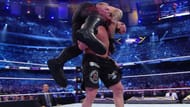
It's one of the most controversial finishes in WWE history and it shocked the wrestling world like few others. The live reactions rank right up there with Ivan Koloff's victory over Bruno Sammartino for the WWWF Championship in 1971— the crowd was absolutely stunned.
Over 30 years later, when Brock Lesnar pinned The Undertaker in New Orleans at WrestleMania XXX, it was the same type of shock. Millions of viewers even thought that someone messed up the finish. How else could it be explained? Surely, The Undertaker wasn't supposed to lose to Brock Lesnar?!
WWE just killed it's golden WrestleMania goose... and for a part-time veteran that was already a main event superstar? The finish did propel Lesnar to another stratosphere, but the story of such a colossal, decades-in-the-making victory could've been foreshadowed or built up much stronger, executed better, followed-up more effectively, or used to create a brand new main event player — not to rehabilitate a megastar who should've been booked with more care in his first couple of years back with the company.
Since then, WrestleMania's felt a bit lacking. Even though The Undertaker still participated through 2017, his more recent matches have paled in comparison to The Streak days.
#9 Roman Reigns, not Daniel Bryan, wins the 2015 Royal Rumble
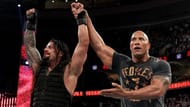
It's easy to forget that just one year prior to Roman Reigns' infamous victory at the 2015 Royal Rumble, the former Shield member was heavily cheered as the battle royale's hopeful winner over Dave Batista. Fast forward to the next year and not even The Rock could stop the Philadelphia crowd from rejecting the company's new heir-apparent.
Reigns' babyface momentum had already started to go the wrong way prior to this night, but a major mistake by WWE booking caused the wheels to finally fall off. The mistake was having the company's most popular superstar, Daniel Bryan, enter the Royal Rumble for his first match back since forfeiting the WWE Championship in June 2014.
Bryan was the overwhelming crowd favourite and was heralded as such when he entered the match at #10. Unfortunately, he was eliminated only moments later, thus angering the crowd for the rest of the night; the verbal venom culminated in a relentless rejection of Reigns as the 2015 Royal Rumble winner.
Under those circumstances, Roman Reigns was unlikely to get over in any arena that night, but certainly not in front of the knowledgeable, passionate fans of Philadelphia. It was a major mistake that WWE, and Roman Reigns, have been struggling to overcome ever since.
#8 Losing their top 2 babyfaces within 24 hours of WrestleMania X-Seven

Steve Austin and The Rock were not only two of the Attitude Era's biggest stars - they were two of the biggest stars in the history of professional wrestling. These two men were both once-in-a-lifetime talents that hit their peak at the same time.
That peak came at WrestleMania X-Seven where Stone Cold vs. The Rock headlined the supershow at the sold-out Houston Astrodome in a rare babyface vs. babyface main event. Unfortunately, this would later be considered the death of the Attitude Era because, within 24 hours, WWE had lost both of its top babyfaces. Austin turned heel at X-Seven while Rock left for Hollywood the night after.
Of course, Rock would make several returns to WWE after this, and Austin turned back babyface again later that year but the magic was gone. Quicker than they would've liked, WWE was forced into replacing both icons — a struggle they have continued with to this very day.
#7 Sgt. Slaughter, Iraqi Sympathizer
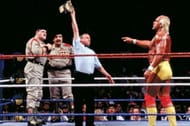
When WWE decided to book Los Angeles' Memorial Coliseum for WrestleMania VII in 1991, the company expected to fill the venue with nearly 100,000 fans. Coming off the hugely successful pay-per-view buyrate of WrestleMania V and the 67,000 fans that jam-packed Toronto's SkyDome for WrestleMania VI, officials were confident they could break their WrestleMania III attendance record at WrestleMania VII. Unfortunately, a major creative misstep caused those plans to be scrapped.
In the summer of 1990, Sgt. Slaughter, the former American patriot, returned to WWE as an Iraqi sympathizer. With a major, real-world conflict ongoing in the Middle East, WWE was heavily criticized for attempting to profit off the war by the portrayal of Sgt. Slaughter. The company's popularity was already waning (blamed on the WWF Champion Ultimate Warrior), and the widespread negative media attention surrounding WrestleMania VII didn't help.
After an advance of only 15,000 tickets were sold, WWE opted to change WrestleMania's venue from the 100,000 seat Coliseum to the much smaller LA Sports Arena. The company cited an inability to secure the Coliseum as the reason for the switch. It's widely believed, however, that the real reason for the change was due to the weak ticket sales for which the characterization of Sgt. Slaughter took the blame.
#6 Bringing back CM Punk after 2 weeks
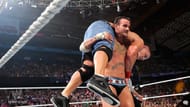
When CM Punk delivered his pipebomb promo on a June 2011 episode of Monday Night RAW, fans took notice. Although they were captivated by the build to his upcoming Money In The Bank main event against WWE Champion John Cena, few expected Punk to actually leave with the title. After all, Punk's WWE contract was legitimately expiring, the news of which had become public and he wasn't expected to re-sign.
So when Punk did leave Chicago's All-State Arena as WWE Champion and seemingly went off into his post-WWE career, audiences — and the media — were captivated like never before.
Unfortunately, WWE's short-sighted strategy in which they prioritized the SummerSlam 2011 buyrate over long-term creative planning lead to Punk returning to the company a mere two weeks later. This killed the white-hot momentum that the angle had and went a long way towards Punk's eventual walk-out that came in early 2014.
#5 Letting Scott Hall & Kevin Nash walk
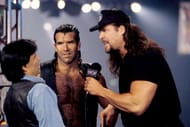
In what proved to be a major momentum shift in the wrestling industry in 1996, Scott Hall and Kevin Nash signed with WCW after Vince McMahon failed to match their offers. According to Hall, he gave Vince McMahon the opportunity to keep him six months prior when he offered several ways for Vince to increase his pay (i.e., a higher percentage on merchandise, letting Hall work in Japan like McMahon allowed Bob Backlund, etc.). The Chairman baulked on all of them and, unfortunately for WWE, it had a domino effect.
Once Hall, an upper mid-card performer in WWE, received a lucrative offer from WCW for nearly half the contracted dates, Hall's good friend Kevin Nash took an interest. After all, "Big Kev" was a former WWE Champion and had been the company's flagship performer for the majority of 1995. Surely, he could get an even better offer from WCW, given his main-event status.
By May of 1996, both New Generation icons took their talents (and eventually the mainstream wrestling audience) over to WCW, helping create their new employer's position as the top wrestling promotion in the world.
#4 Extending Raw to 3 Hours
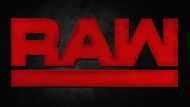
Watch any of WWE's retrospective documentaries on the rise and fall of WCW and the same common criticisms are likely to be heard. Ironically, modern-day WWE often replicates many of those previous missteps with one of the bigger standouts being Raw's move from two hours to three.
Of course, there was an immediate financial benefit from the USA Network to provide an additional hour of content, but in doing so, WWE left themselves vulnerable to more long-term problems.
Not the least of which was taking an already saturated product (i.e., 6+ hours of weekly television content) and over-saturating it. This came in the middle of WWE's plan to add even more content via its own streaming service, the WWE Network. It should have come as no surprise that, soon after Raw expanded to three hours, the product suffered and RAW's hourly ratings would soon reach pre-Attitude Era lows.
#3 Splitting the roster
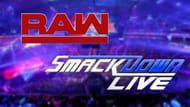
Roughly a year after Vince McMahon purchased WCW in 2001, the WWE decided it had enough quality talent to justify two separate brands. This predicated the promotion's first-ever brand split: one unique roster for Raw, one for SmackDown. Unfortunately, the talent pool wasn't as deep as they thought and within a few years, the brand extension was abandoned.
It didn't help matters that WWE played fast and loose with the hard separation that was supposed to entice brand loyalty. Too often, SmackDown superstars randomly made their way to Raw and vice-versa for no rhyme or reason and with little to no explanation. So when WWE opted to re-merge the brands again in 2016, long-term expectations were not very high.
While there are certainly benefits to having two separate brands, WWE just doesn't seem to know how to implement it effectively. The brand split may be hot out the gate, but eventually, the company reverts back to its loose strategy and their failure to remain consistent has been a major mistake.
#2 The Invasion
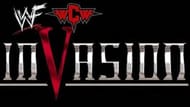
WWE's major missteps and colossal failures would not be complete without the egregious Invasion storyline that plagued 2001. It should've been the biggest angle in pro-wrestling history: the ultimate confrontation between the industry's top two promotions that would finally produce years' worth of dream matches. Hogan vs. Austin? Undertaker vs.Sting? DX vs. nWo? Vince McMahon vs. Eric Bischoff?
Instead, fans got a half-hearted alliance between WCW mid-carders and former ECW talents, helmed by Shane and Stephanie McMahon. No Hogan, no Bischoff, no Flair. Just McMahons and a majority of forgettable WCW talents. In addition, the eventual leader of this WCW/ECW Alliance was WWE icon "Stone Cold" Steve Austin because nothing personifies WCW like Austin 3:16. What?!
Needless to say, WWE lost viewers in droves thanks to the bungling of this angle, and the hottest period in pro-wrestling history quickly faded into a distant memory.
#1 Stephanie McMahon takes over creative

As bad as the Invasion was — and it damaged the business quite a bit — it wasn't as big a mistake as making Stephanie McMahon the head of creative. Is it any coincidence then that the downfall of the hottest period in pro-wrestling history came during the same year that Stephanie McMahon began her leadership role on the creative team?
The product is still suffering from Vince McMahon's decision to entrust the foundation of WWE to his daughter despite her lack of experience or track record of creating compelling television. As a brand ambassador, Stephanie McMahon may be fantastic, but as the head of Creative, not so much.
Although Stephanie McMahon was quietly removed from this role in 2013 when a new position was created just for her (the role of Chief Brand Officer), it couldn't undo the damage she had done to the product. No matter how bad his daughter was at leading Creative, Vince McMahon was never going to undermine his daughter like he had done in years past to former Creative honchos like Bill Watts or Vince Russo.
Not only was it a poor, baseless decision that yielded terrible results, but it also sent an awful message, one dripping with nepotism, to the rest of the company.
Send us news tips at fightclub@sportskeeda.com
Make Sportskeeda your preferred choice for WWE content by clicking here: Source preferences

